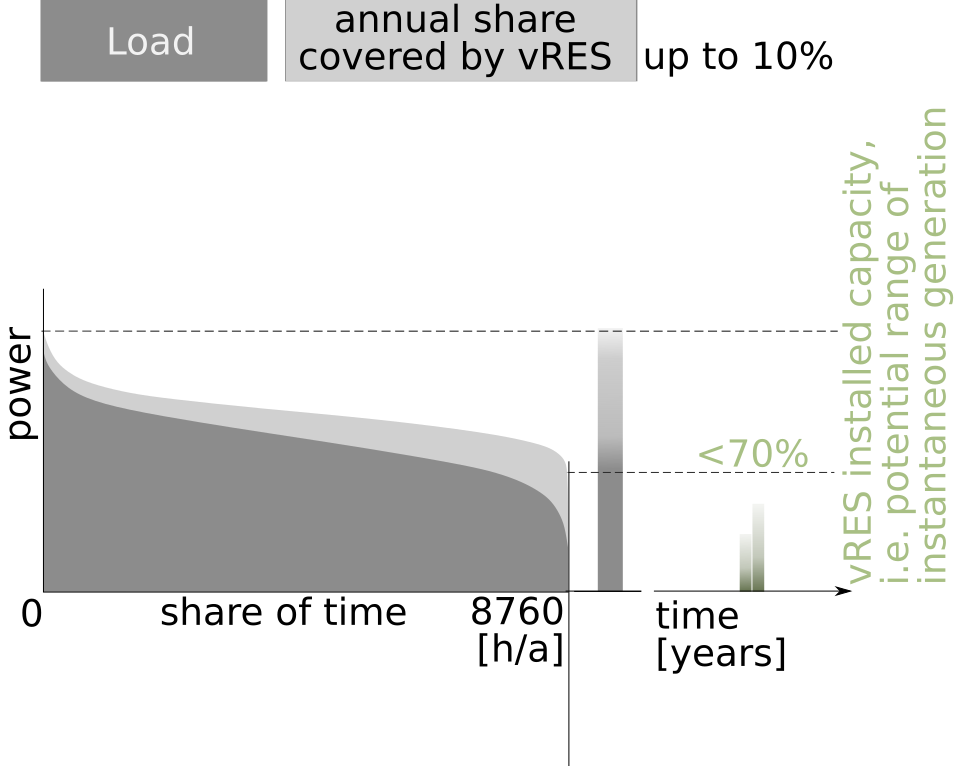
Indicators and Milestones
Installed vRES capacity is increasing to about 60% of system minimum load.
Incidentally, the residual load decreases to very low values.
Milestones
Operational concepts have been adjusted successfully and tools have been implemented allowing to run dispatchable generation and
vRES smoothly together. vRES forecasts are an integral part of scheduling. Monitoring and real-time estimates (now casts) of
distributed generation allow to characterise the system situation with sufficient detail for secure operation.
If network congestion is an issue, processes for generation and load flow management (re-dispatch of power plants) are mature and
the required technical interfaces are implemented.
vRES share in annual generation increases to about 10%.
Implications
First conflicts occur between potential vRES generation and scheduling of
dispatchable generation
for load following and provision of ancillary services.
Because theses situations are rare and cover short periods only, curtailment of vRES is an efficient way to solve the conflict.
From a societal perspective the economic impact of this approach is negligible.
For individual vRES projects the economic impact can be substantial, though.
For that reason it is crucial that the financial risks related to curtailment are not delegated to the project owners / operators.
Otherwise vRES development will stagnate as soon as this effects occurs.
Socialisation of economic risks of curtailment is a precondition for continued growth of vRES capacity.
